In the face of unprecedented shocks – from extreme weather events to pandemics and disease outbreaks – our health systems are being put to the test. The term “health system resilience” has become a call to action and a rallying cry for governments to protect the health and well-being of their people during crises. But what exactly does health system resilience mean, and why does it matter?
Let’s explore the concept of health system resilience, including understanding the commitments from Pacific health leaders on how to make this happen from the recently concluded 15th Pacific Health Ministers Meeting.
Explaining health system and shocks to the system
A health system is a complex network of people, institutions, and resources that work together to deliver health services to improve the health and well-being of the population. There are six core building blocks of a health system: service delivery, health workforce, access to essential medicines, health financing, health information systems, and leadership and governance. Each of these components are interconnected and critical to a functioning health system so that communities remain healthy.
Now imagine if there’s a sudden 'shock' to the health system. This can range from large-scale shocks that affect a huge portion of the population like a pandemic, disease outbreak, an earthquake or the climate crisis, or small-scale like a localised flooding or power outage. Whatever the scale, such shocks have the potential to disturb and stress a part or the whole health system.
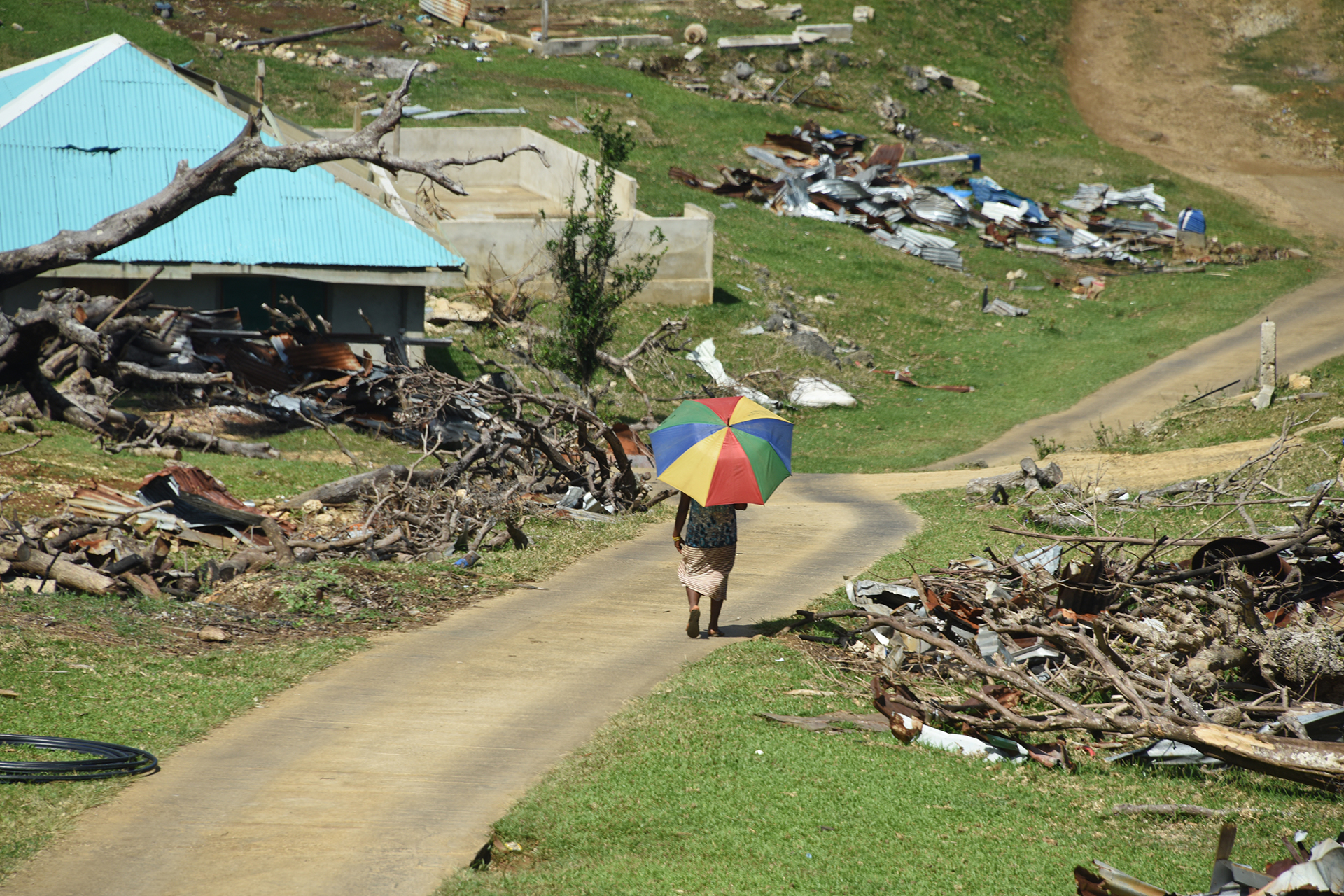
Ruined structures from the onslaught of Typhoon Cyclone Harold in Vanuatu in 2020. Photo: WHO/Philippe Metois
We don’t have to imagine – we’ve seen how the COVID-19 pandemic negatively affected health systems around the world, including making health workers sick, causing a global shortage of medical equipment and supplies, interrupting health service delivery, and ultimately affecting the health and well-being of our people.
But even small shocks can disrupt the health system. For example, a local water supply interruption can have an impact on the sanitation and hygiene of communities and affect infection prevention and control measures and patient care in health facilities.
Understanding resilient health systems
A health system is 'resilient' when it can effectively prevent, prepare for, detect, adapt to, respond to, and recover from public health threats while ensuring the maintenance of quality essential and routine health services in all contexts.
Let’s look at a tropical cyclone as an example. Even before a cyclone hits a country, a resilient health system is prepared to swiftly monitor the ongoing situation, can prevent disease outbreaks from occurring, and respond to the health impacts of a cyclone once it affects the islands. A resilient health system is also able to continue to deliver critical services to the community despite the cyclone damages, such as management of chronic diseases like diabetes and heart disease, routine immunization of children, mental health services, and provision of medicines.
In the aftermath of the response to the tropical cyclone, a resilient health system can bounce back even better and stronger. So, during recovery, a resilient health system learns from prior experience and continues to enhance vital capacities like early warning systems and disease monitoring, laboratory capacity, logistics and supply chain management, and risk communication and community engagement for better readiness for future shocks.
Committing to health system resilience in the Pacific
Pacific health leaders have long acknowledged the need to strengthen health system to be ready for future shocks such as pandemics, disease outbreaks and climate-related disasters. In this year’s 15th Pacific Health Ministers Meeting, health ministers from Pacific island countries and areas (PICs) heeded the call to action and strongly committed to eight coordinated actions towards health system resilience:
1. Develop a package of core essential health service delivery
Identify which health services must continue in the event of shocks at each service delivery level. There is no “one-size-fits-all” package, so it will be based on the capacities and needs of the countries and should be planned and financed accordingly.
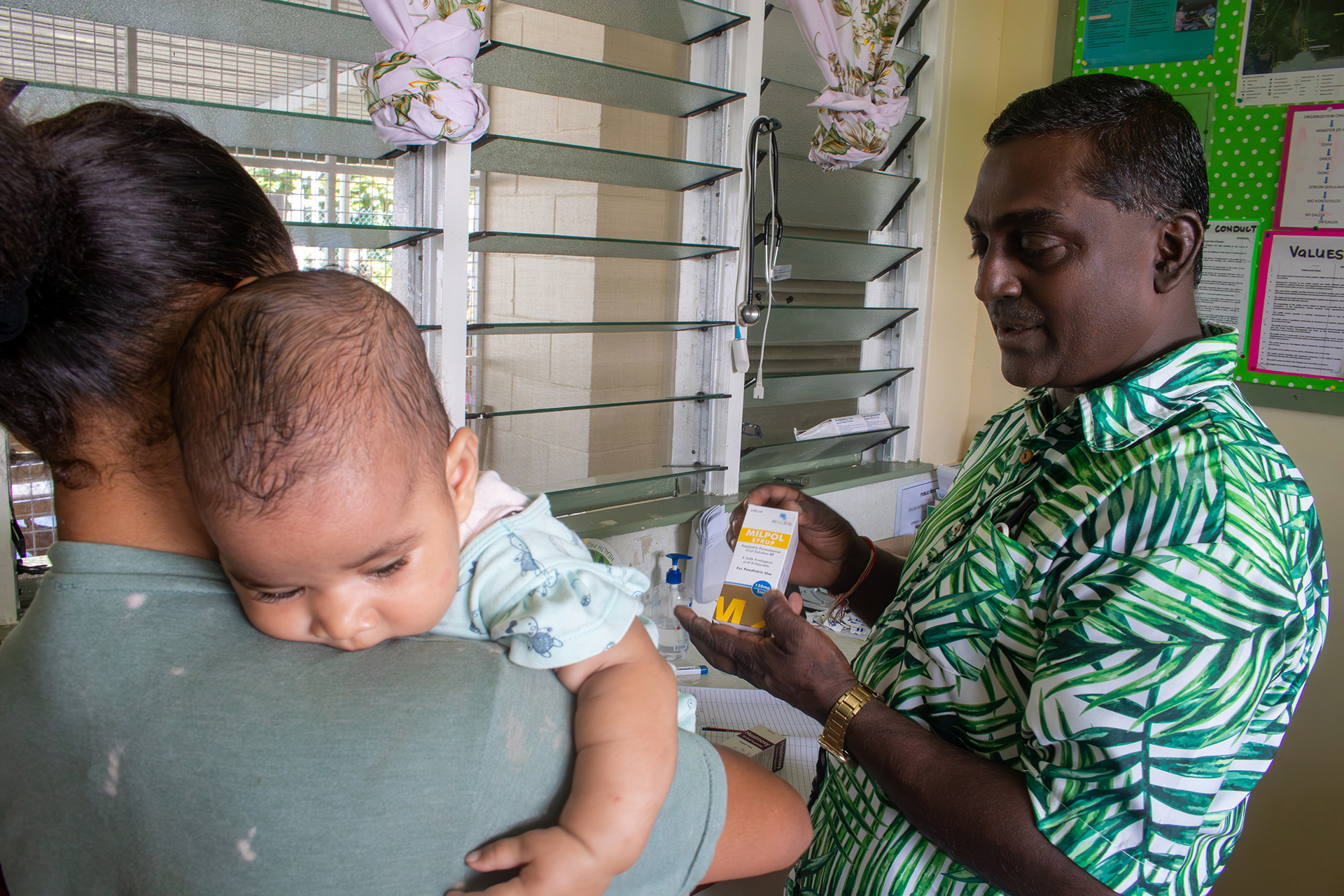
Nurse Practitioner Raman Lal talks to mum Sainiana about the medicines he’s prescribed during the check-up of 4-month-old baby Kalesita at the Galoa Nursing Station in Fiji. Photo: WHO/Faizza Tanggol
2. Strengthen regional supply chains
Through Pacific regional coordination and collaboration, explore the feasibility of establishing logistics hubs that will ensure more efficient supply chain management, prepositioning and delivery of lifesaving equipment and supplies in the event of shocks.
_1920px.jpg?sfvrsn=83857cd7_3)
A planeload of medical supplies touches down in Apia to bolster Samoa’s response to the COVID-19 pandemic. Photo: WHO/Tihati Devoe
3. Ensure the readiness and resilience of the health workforce
Establish governance mechanisms and policies for health workers to have the right skills needed and ensure they have the proper training to be ready for shocks, including for surge capacity and providing access to psychosocial services.
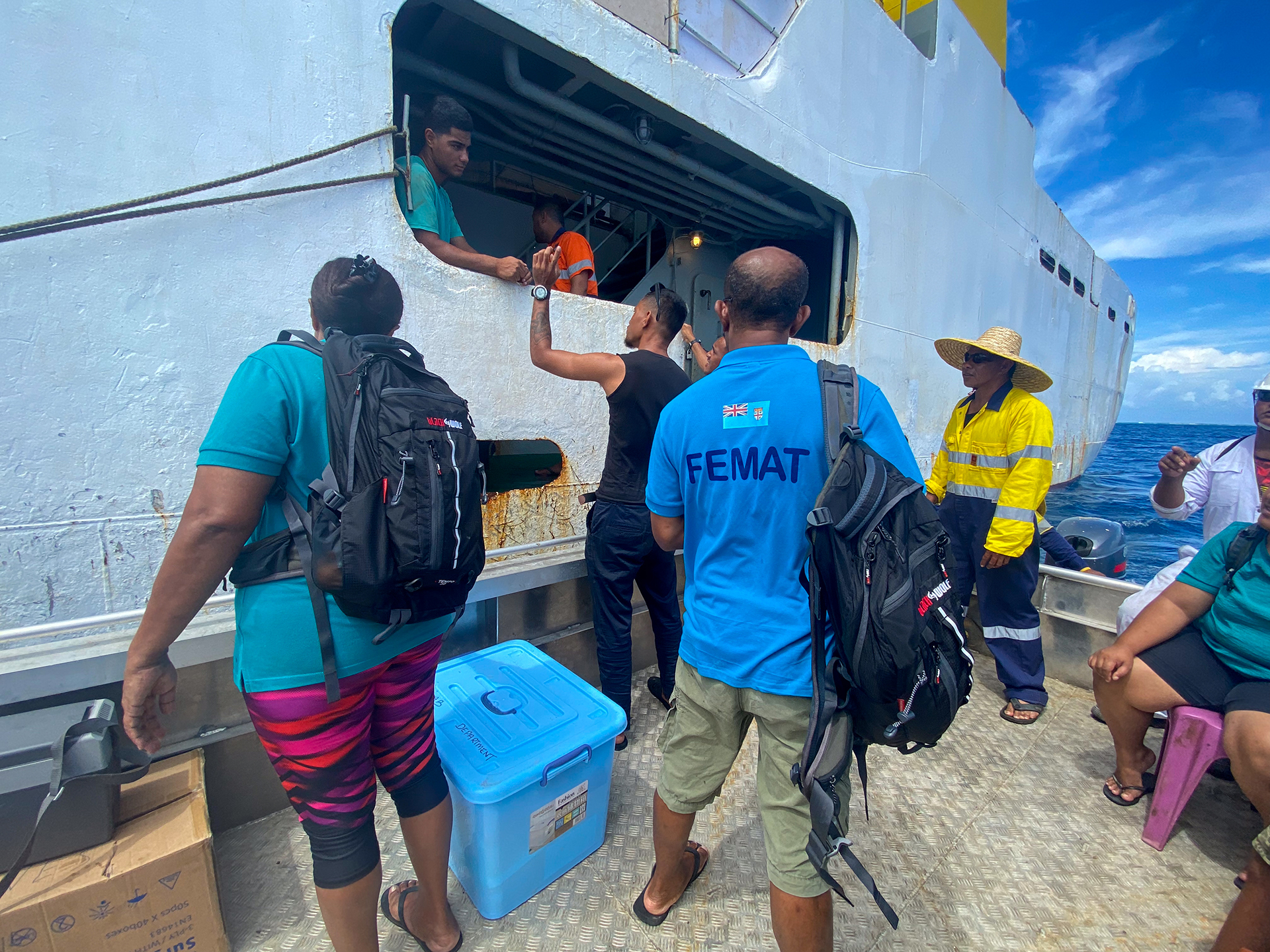
Tuvalu Ministry of Health, Fiji Emergency Medical Assistance Team, and the World Health Organization transfer to a smaller boat on their way to Nukufetau, one of the atolls in Tuvalu. The team is visiting Nukufetau as part of the COVID-19 response in the country, including providing hands-on training and delivery of essential medicines and supplies. Photo: WHO/Karen Hammad
4. Prioritize populations most at risk from shocks
Identify and involve communities and groups who are most at risk from shocks. This includes close collaboration with at-risk groups in the planning, implementation, and evaluation of relevant interventions.
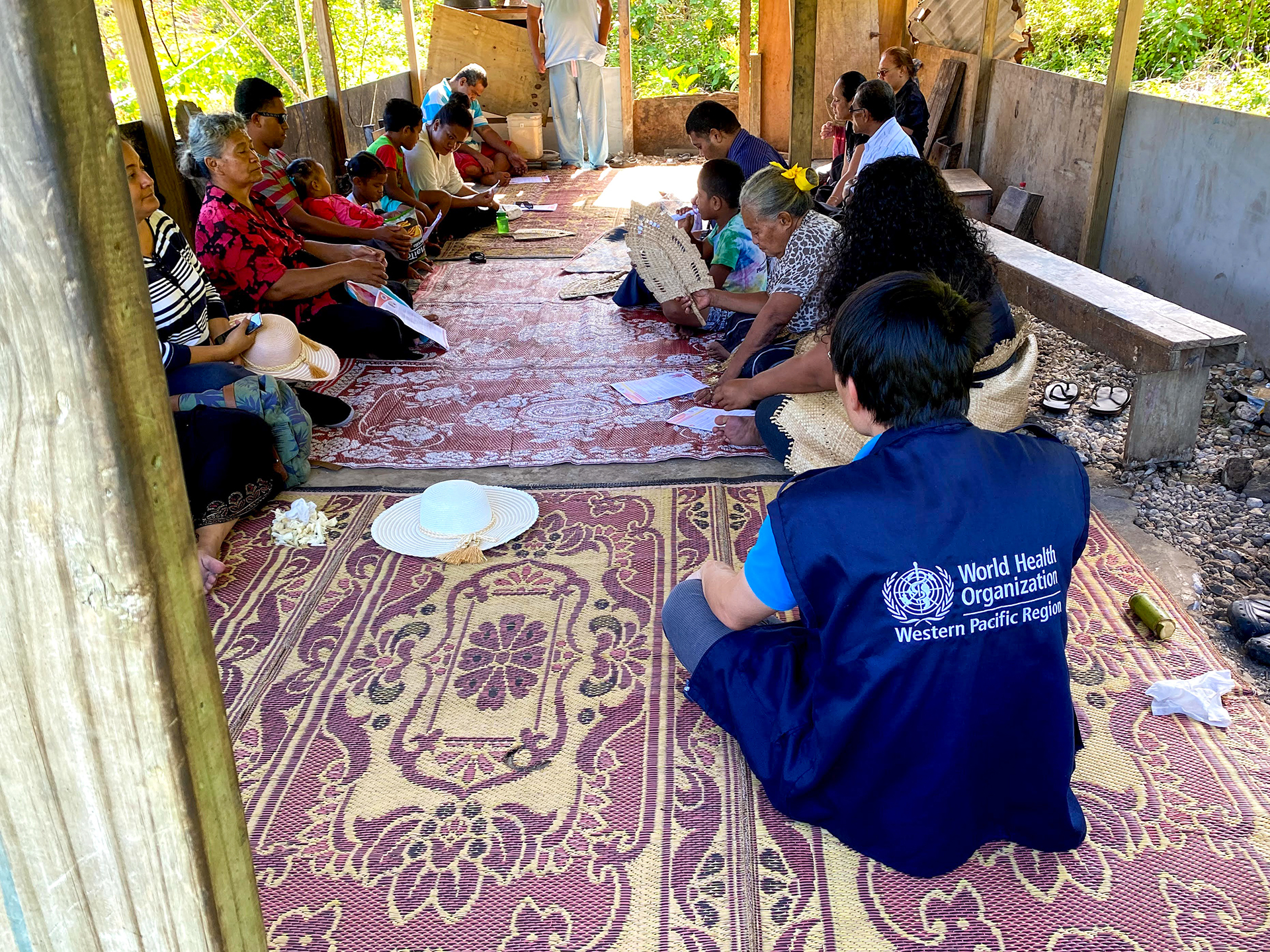
The Tonga Ministry of Health holds a discussion with members of the community who are most at risk from COVID-19. Photo: WHO
5. Include risk communications and community engagement
Integrate risk communication and community engagement (RCCE) as an essential capacity of health system resilience. This includes planning and resource allocation for RCCE, based on country context.
_1920px.jpg?sfvrsn=b880b28f_3)
A WHO staff assists in the risk communication and community engagement efforts of the Pohnpei State Public Health Division during their vaccination outreach for COVID-19 and influenza. Photo: WHO/Acer Apis
6. Act to mitigate and adapt to the climate crisis
Strengthen climate actions, including evaluating the resilience of health facilities to climate change impacts, collaborating with other sectors for climate co-health benefits, and climate financing for mitigation and adaptation in the health system.
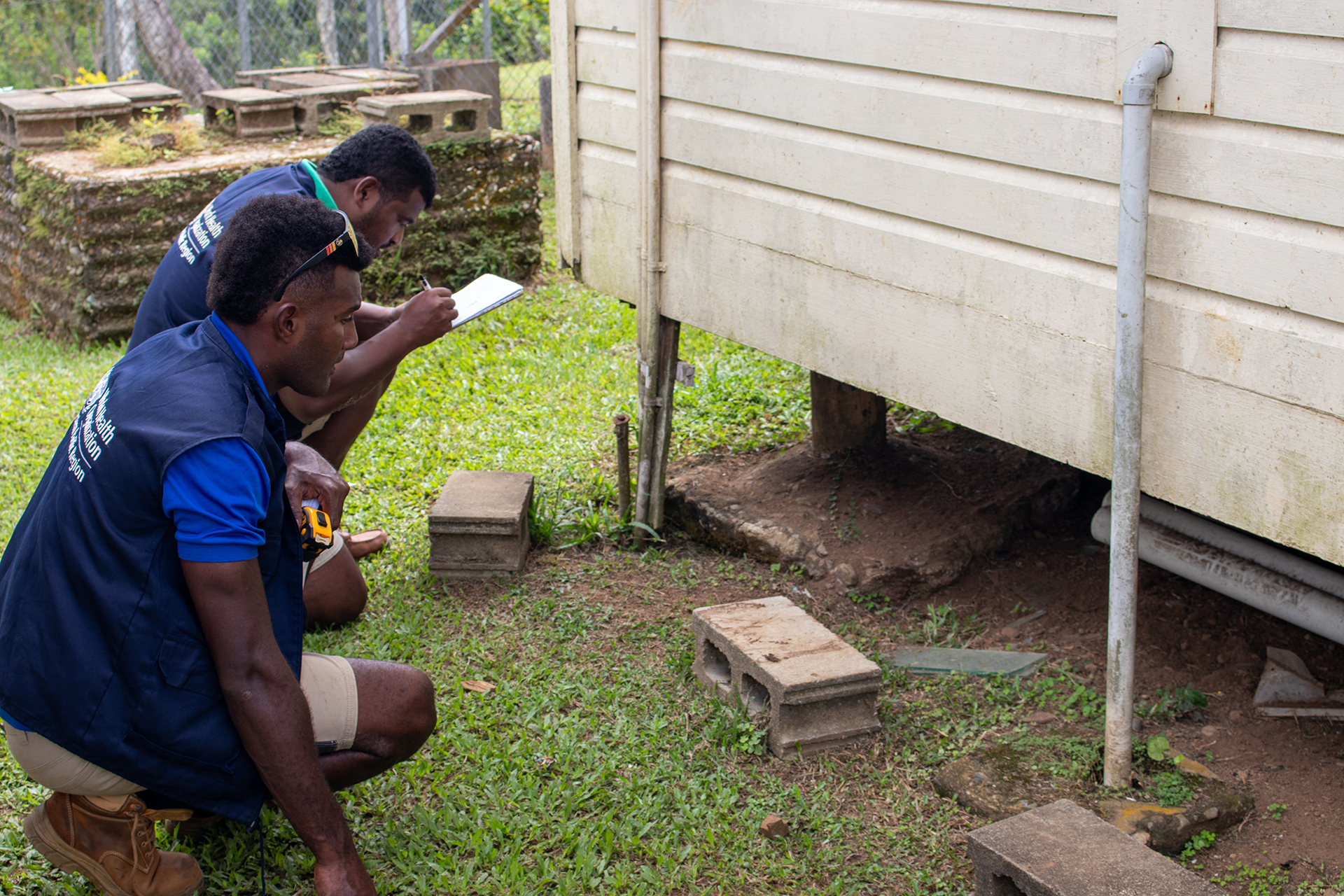
WHO personnel support the Fiji Ministry of Health and Medical Services in assessing the structures of Navunikabi Nursing Station. This assessment is part of the ongoing partnership with the Korea International Cooperation Agency to strengthen the country’s health system resilience to the impacts of climate change. Photo: WHO/Penioni Matadigo
7. Conduct regular evaluations and exercises
Lead and coordinate evaluations, reviews, assessments, exercises, and other activities that will test health system readiness as well as identify best practices and areas for improvement in preparation for real-life emergencies and shocks.
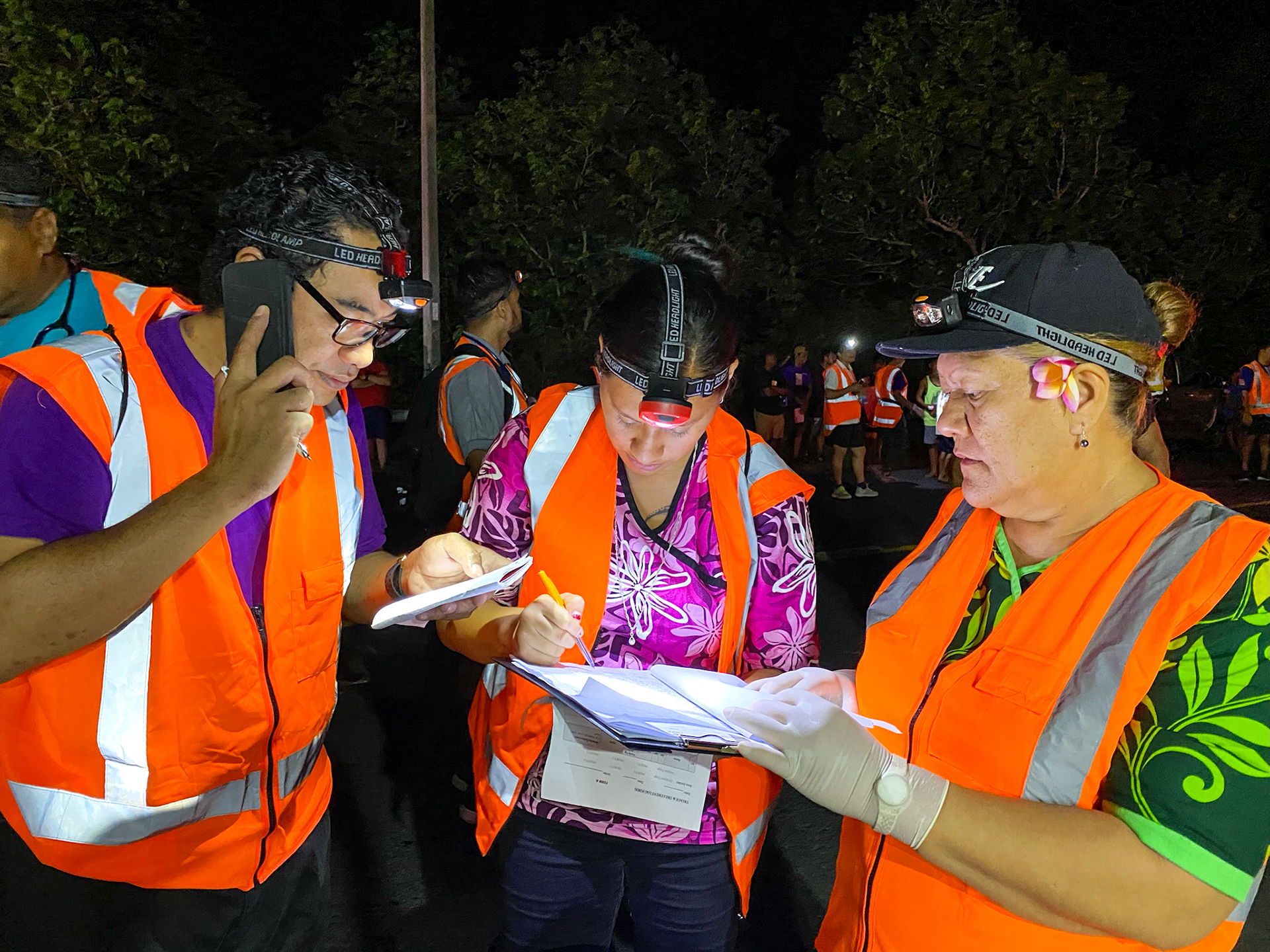
Members of the Cook Islands Emergency Medical Assistance Team (KukiMAT) participate in a simulation exercise as part of the Emergency Medical Teams training. Photo: WHO/Sean Casey
8. Work with other sectors to strengthen information management
Improve data collection and data analysis on cross-sectoral hazards that impact human health, such as animal health, climate change, and hydrometeorological and geologic hazards, and develop standards to enable smart systems for information sharing.
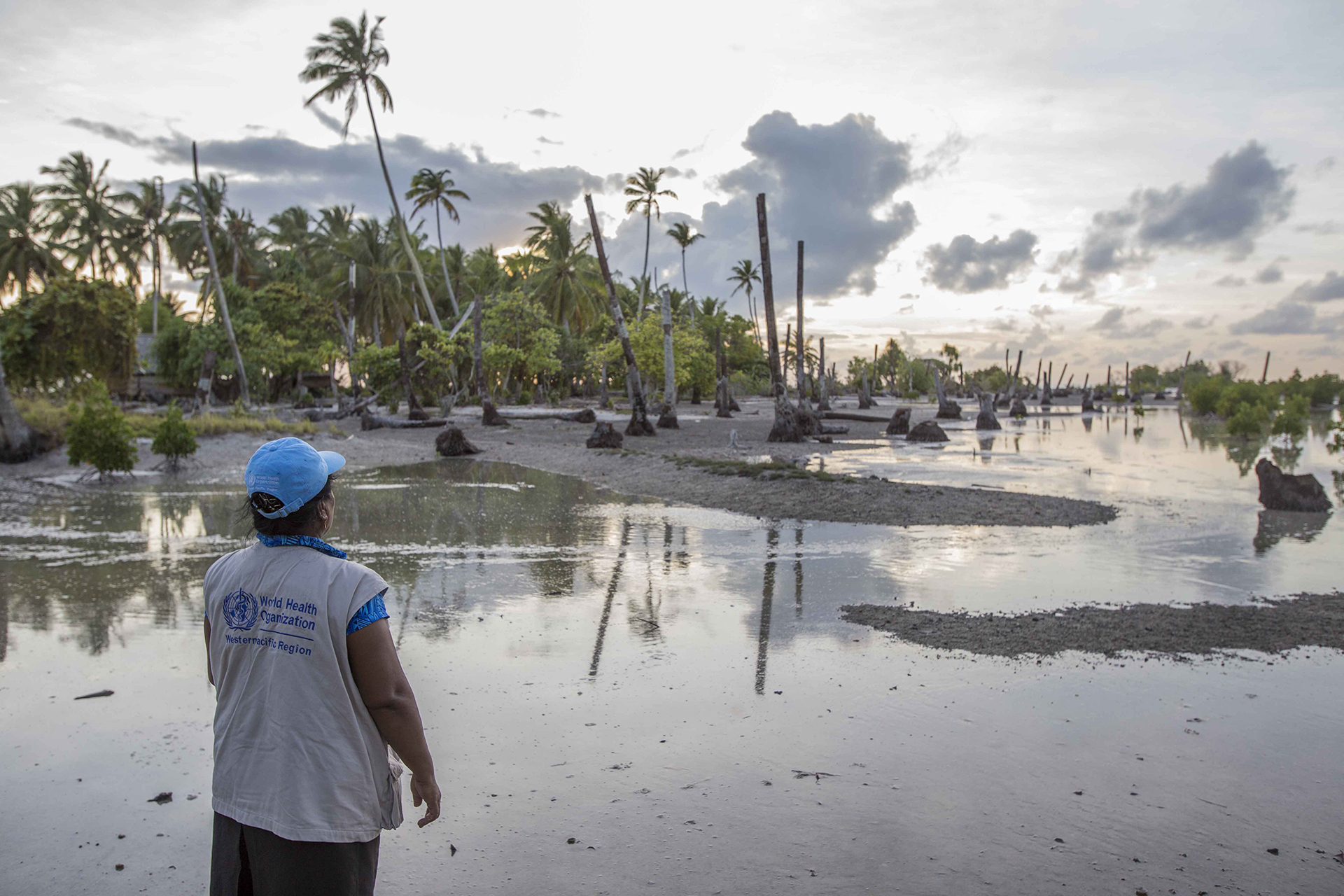
A WHO staff member in front of flooded and poisoned coconut palms near Tabunginako village on Kiribati's outer Abaiang island. Photo: WHO/Will Seal
Armed with these strong commitments, Pacific health ministers will work with other sectors and development partners like WHO to ensure concrete actions towards health system resilience. As we face an unpredictable future, it is vital to continue working together, learn from past experiences, and build health systems that can effectively adapt, respond, and recover in the face of adversity.




